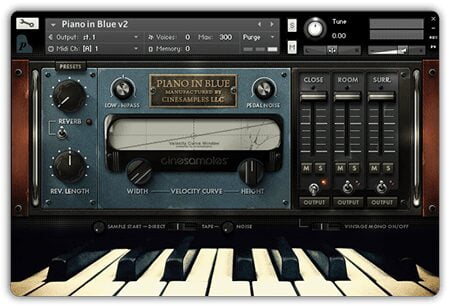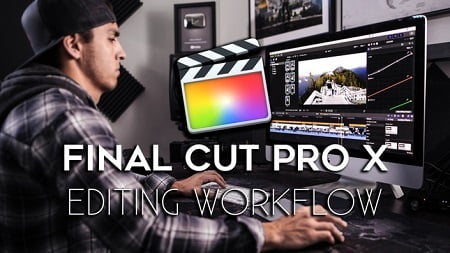
Cinesamples Piano in Blue v2.3b KONTAKT
P2P | 15 April 2019 | 10.1 GB
We were provided a unique opportunity to preserve an important piece of musical history in its final days. Word had come to us that the historic Clinton Recording Studios in midtown Manhattan was forever closing its doors, destined to be transformed into a modern condominium complex.
One of the many treasures contained therein was this particular Steinway Model D Concert Grand which used to live in the Columbia Records 30th Street Studios. The CBS 30th Street Studio, “The Church” was perhaps the most influential recording studio of the 50’s and 60’s producing dozens of legendary albums in various genres.
Of those recordings this piano played a critical role in two albums which are still considered among the finest recordings of all time. First being the original Glenn Gould “Goldberg Variations,” the most critically received classical album of all time. Four years later came Miles Davis’ “Kind of Blue” which forever altered music.
In 1981 Columbia closed its doors and this piano was brought to Clinton. In addition to the grand two of the original Columbia Nuemann U49 microphones made the journey also. These were two of the five (or six) microphones originally used on the Kind of Blue date. We were fortunate enough to sample this special grand using these two original microphones.
Get the Version 2.0 Update
(For those who purchased prior to August 16, 2012. New purchases already contain this update.)
We were provided a unique opportunity to preserve an important piece of musical history in its final days. Word had come to us that the historic Clinton Recording Studios in midtown Manhattan was forever closing its doors, destined to be transformed into a modern condominium complex.
One of the many treasures contained therein was this particular Steinway Model D Concert Grand which used to live in the Columbia Records 30th Street Studios. The CBS 30th Street Studio, “The Church” was perhaps the most influential recording studio of the 50’s and 60’s producing dozens of legendary albums in various genres.
Of those recordings this piano played a critical role in two albums which are still considered among the finest recordings of all time. First being the original Glenn Gould “Goldberg Variations,” the most critically received classical album of all time. Four years later came Miles Davis’ “Kind of Blue” which forever altered music.
In 1981 Columbia closed its doors and this piano was brought to Clinton. In addition to the grand two of the original Columbia Nuemann U49 microphones made the journey also. These were two of the five (or six) microphones originally used on the Kind of Blue date. We were fortunate enough to sample this special grand using these two original microphones.
A friend of ours, John Davis, did a scoring session at Clinton and let us know about the closing as this day was to be the final date. As the conversation drifted from the saddening state of affairs for large stages we came to talk about why this particular stage was a special place. Although I had previously worked at the this studio I was never aware that the grand in the corner was the “one piano” used in so many of my favorite recordings.
At the time we were in Seattle conducting some non-cinesamples recordings. Mike and I walked over to secure a copy of Ashley Kahn’s paperback Kind of Blue: The Making of the Miles Davis Masterpiece. This book pushed us across the threshold and the vision for this session started to become a reality.
As Patti headed back home to put the finishing touches on the Seattle project Barry caught a red-eye that night for Manhattan. We had arranged to extend the closing date of Clinton by one day, just ensuring us enough time to sample this extraordinary instrument. Much of the gear being used was already up on Ebay. It was the last session ever recorded at Clinton.
With a mind to the handful of historic pictures from the recording Kind of Blue our engineer Tim Starnes (Drums of War, HollywoodWinds, Cinesnares, Cinetoms 2, CineCrash) set up three sets of microphones. The first pair – the U49’s from old Columbia set up in historical position (note that the original was in mono), the two other pairs each set back a touch further from the other.
We recorded two signal chains for each mic, a clean signal going through the Neve board and one going through a historic tape machine and finally into pro tools. We highly suggest exploring the charming colorization of the tape signal but both are provided for your convenience. For some of the youngsters out there note that tape will alter the sound of medium to high gain velocity layers and that often engineers go through great lengths to achieve this distortion.
Due to the delightful variances in timbre with each key the piano was sampled chromatically; this was the only way to get a true representation of the instrument. Barry was the pianist for the sampling and he employed a unique strategy.
PIANO SPECS:
1949 Steinway D via Neve 8078 Console
8 Velocity Layers Sampled Chromatically
9300 Samples
3 Microphone Positions
Close/Vintage – 2x Neumann M49 near the lid
Mid – 2x B&K 4007 at the tail of the piano
Far – 2x Sennheiser MKH20′s in the hall
2 Processing Paths (Tape; Direct in)
Studer A800MKIII 24 Track Analog Tape Machine
Programmed by Sam Estes; scripted by Greg Schlaepfer; recorded by Tim Starnes
As always we share our revenue with our brilliant team of programmers, engineers, editors and musicians.
NEW Piano in Blue v2 Complete Update
Latency
We added a “Sample Start” knob, located next to the Direct/Tape switch, which will cut into the samples of the sustains by 20ms – this adjustment will remove all of the hammer/finger noise from the instrument. While we do not recommend using this feature, for those with lag issues, this addition can be useful to make the piano more “pop-like” – however, it will remove the “weighted” feel of the piano.
Tape Sample Replace
We have re-recorded all the sample sets back through a physical (not a plugin) Studer tape machine with better leveling to remove the “crunch” on the top velocities. ALL samples have been replaced for the tape setting. We also painstakingly re-denoised all of the samples, so there is very little tape noise buildup in the background. We highly recommend adding a bit of tape noise back in to blend the samples together. You will notice some tape artifacts in some of the samples, but
this is part of the natural sound of using tape.
Individual De-noising of V1 Direct Samples
There were a few samples in the Direct patch that were too noisy or had low
frequency bumps – these samples have been addressed and fixed.
Sample Fix – F4, Velocity 101-110, Direct-Room
There was a modulated distortion noise on this note – this noise has been
removed.
91-110 quick release velocities
There were issues with the shorter release samples being too quiet in this region – this issue has been fixed.
Various minor adjustments to ADSR curves and some minor volume tweaks on individual samples.
Added CC11 (Expression) control
WHAT’S NEW?
– Fixes for distorted tape samples
– Fixes for image shift issues
Homepage:
https://cinesamples.com/product/piano-in-blue




